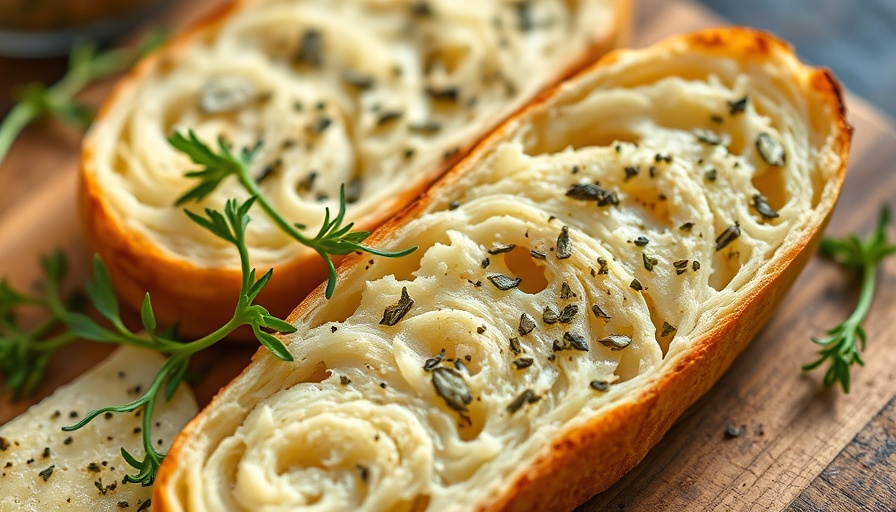
The Allure of Garlic Bread: A Tasty Indulgence
Garlic bread is one of those irresistible offerings that often finds its way onto our dinner tables, particularly at restaurants. Its crunchy exterior and deep flavor profile make it a beloved appetizer or side dish. But as fitness enthusiasts and gym owners, we often weigh our cravings against our commitment to a healthy lifestyle. Is garlic bread simply a tasty treat, or does it come with a health cost?
Dissecting the Nutritional Profile
To truly evaluate garlic bread, we need to consider its ingredients. While garlic itself boasts numerous health benefits—ranging from boosting the immune system to promoting heart health—the other components can tell a different story. The bread portion is typically made from flour, while the topping primarily consists of butter or margarine. Many commercially prepared varieties use palm oil or margarine, which, while cost-effective, can be laden with saturated fats.
For instance, Sainsbury's garlic baguette contains a mix of margarine and butter among its ingredients, which raises the calorie and fat count significantly. In contrast, brands like M&S, which utilize real butter, claim richer flavor but also contribute to higher calorie intake. The stark difference in ingredient quality can influence how we approach our health goals.
Calories, Fat, and Moderation
It’s no surprise that garlic bread is calorically dense. Eating just a few slices can add up to a large percentage of your daily caloric intake, especially when combined with high-fat toppings. For gym owners and fitness trainers, it's crucial to remind clients that while moderate indulgences can fit into a balanced diet, garlic bread should remain just that—a rare pleasure rather than a staple.
Why Moderation Matters
Understanding the nutritional downsides of garlic bread highlights the importance of moderation in our diets. While it's enjoyable to savor a slice now and then, continual consumption can counteract fitness efforts. Encouraging clients to celebrate food without guilt while also being mindful of their nutritional intake is pivotal in promoting a sustainable approach to healthy living.
Tips for Healthier Alternatives
Fortunately, there are healthy twists on garlic bread that fitness instructors and health-conscious eaters can experiment with. Consider using whole-grain bread instead of white, which can add fiber and nutrients. Olive oil can be a wonderful substitute for butter; it provides healthy fats while still adding flavor. Additionally, roasting your own garlic to blend into a spread can enhance flavor without compromising health.
Conclusion: A Treat for Special Occasions
Ultimately, garlic bread holds a special place in culinary hearts, yet its health profile requires consideration. By being aware of its ingredients and caloric content, fitness professionals can guide their clients toward making more informed choices. Remember, a well-balanced diet can accommodate the occasional indulgent treat! Use this insight to help your community maintain balance in their diets and celebrate food's joyful aspects.
 Add Row
Add Row  Add
Add 




Write A Comment